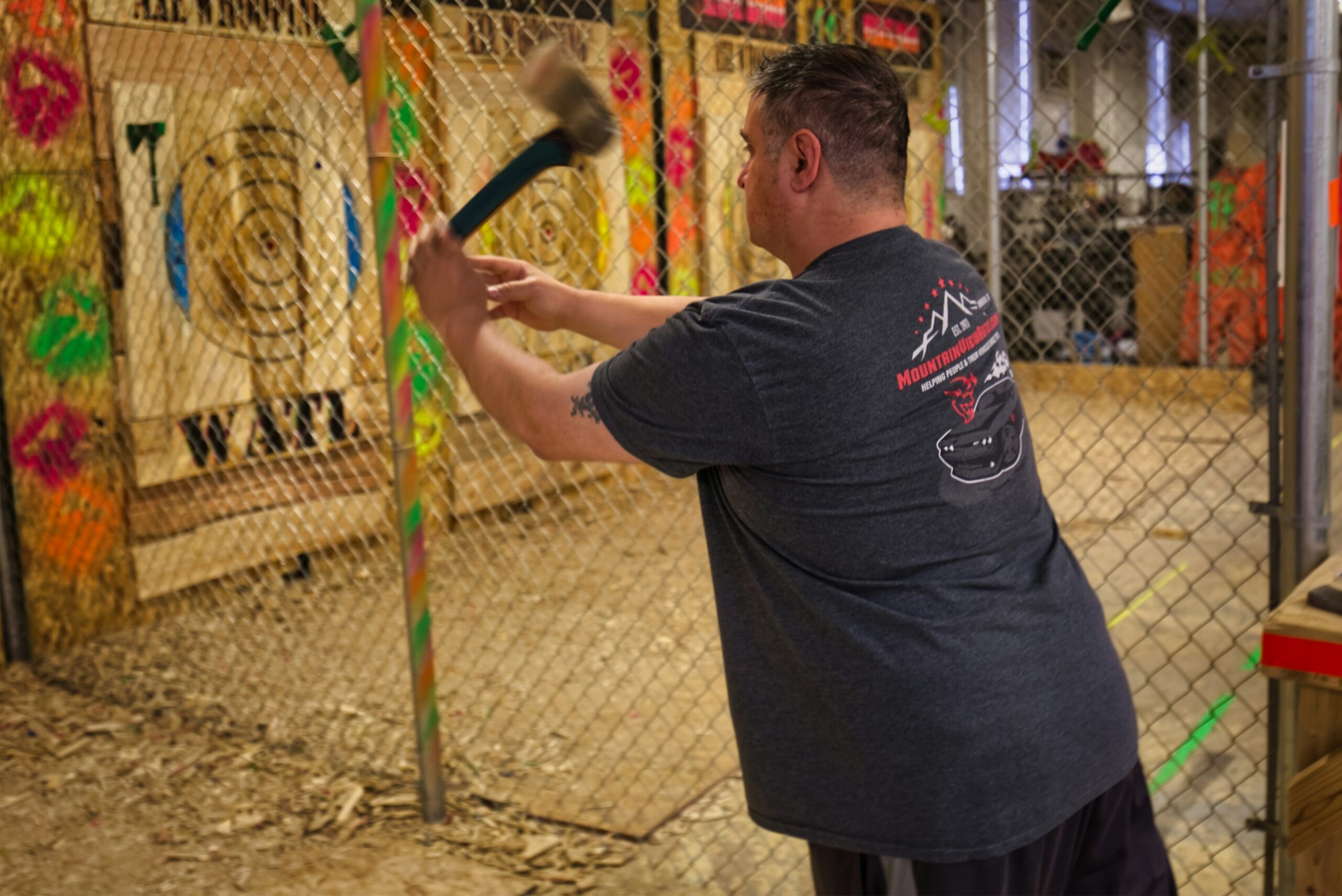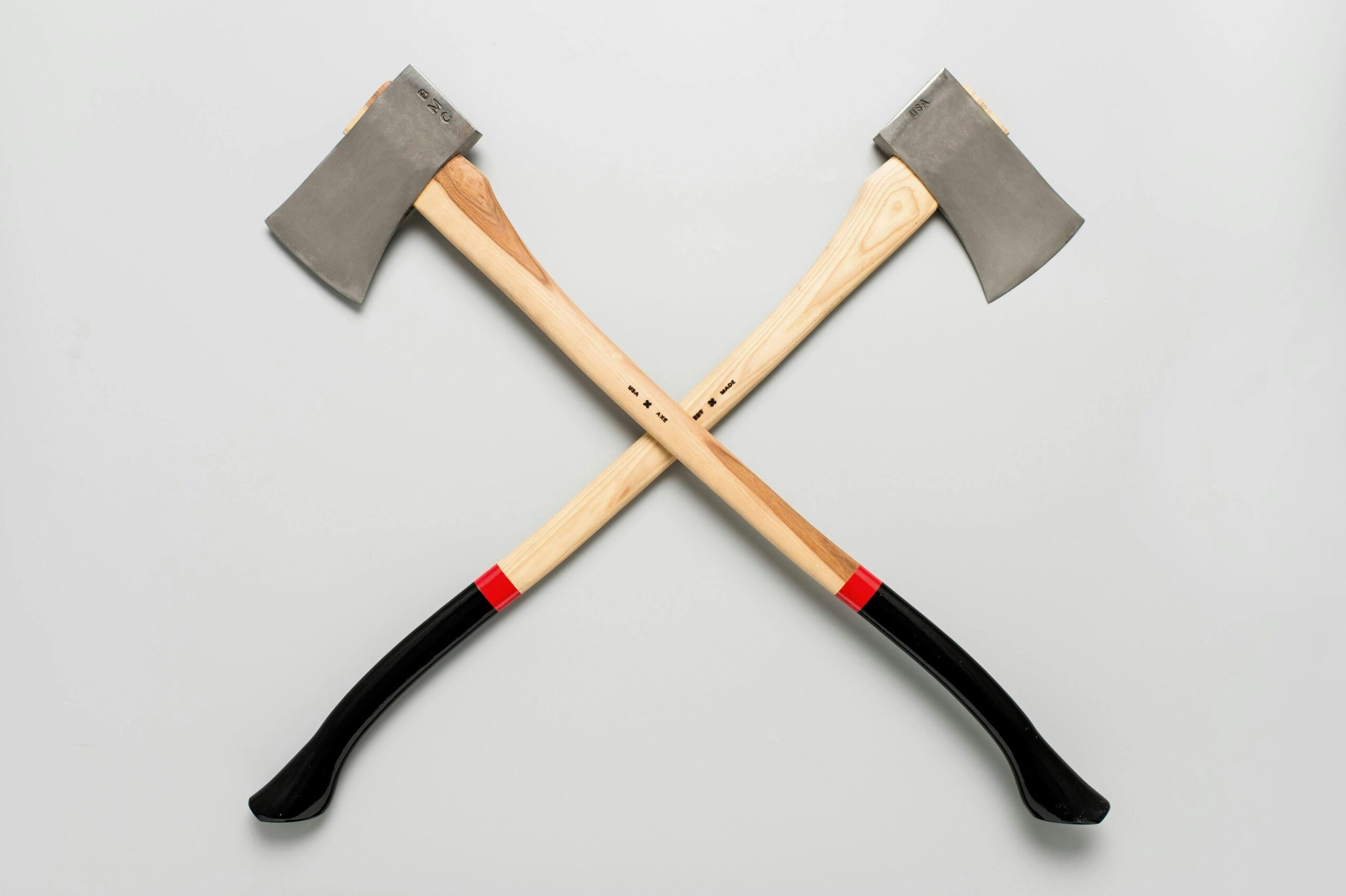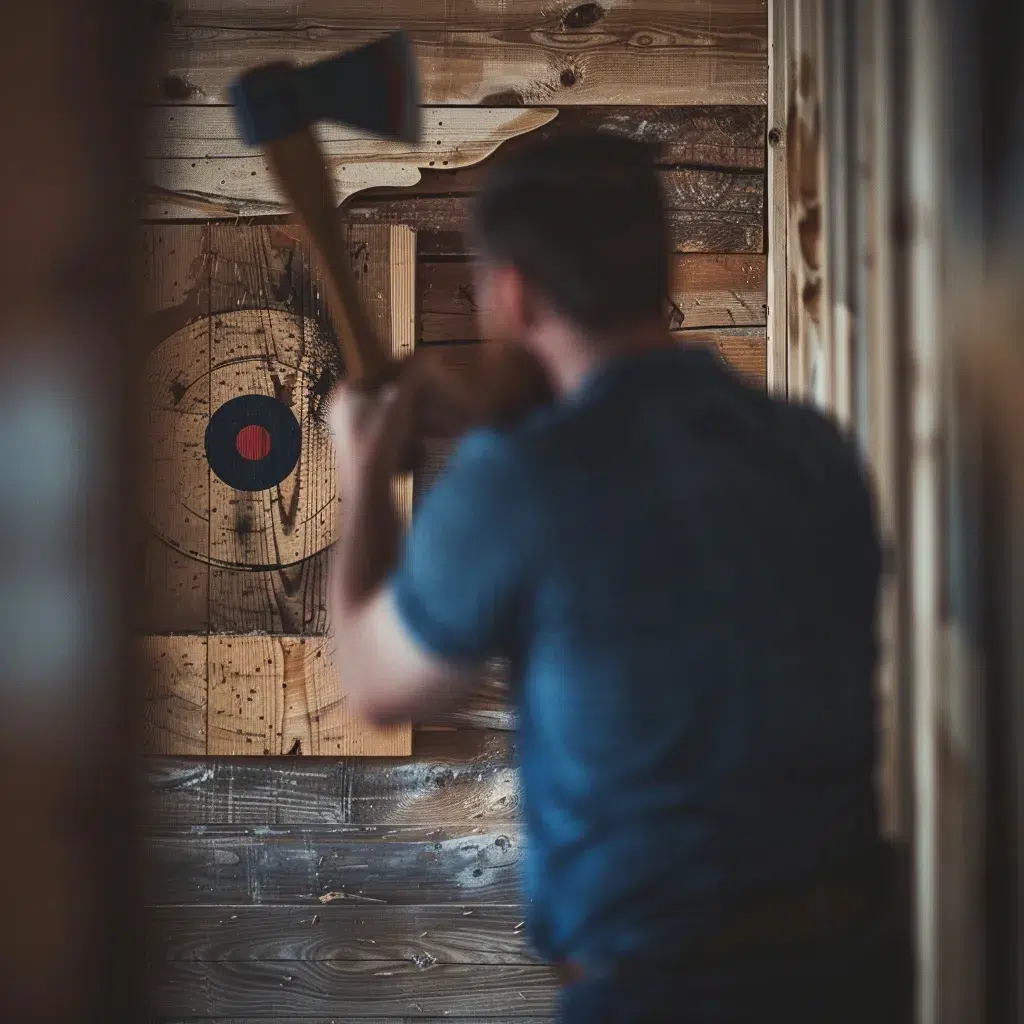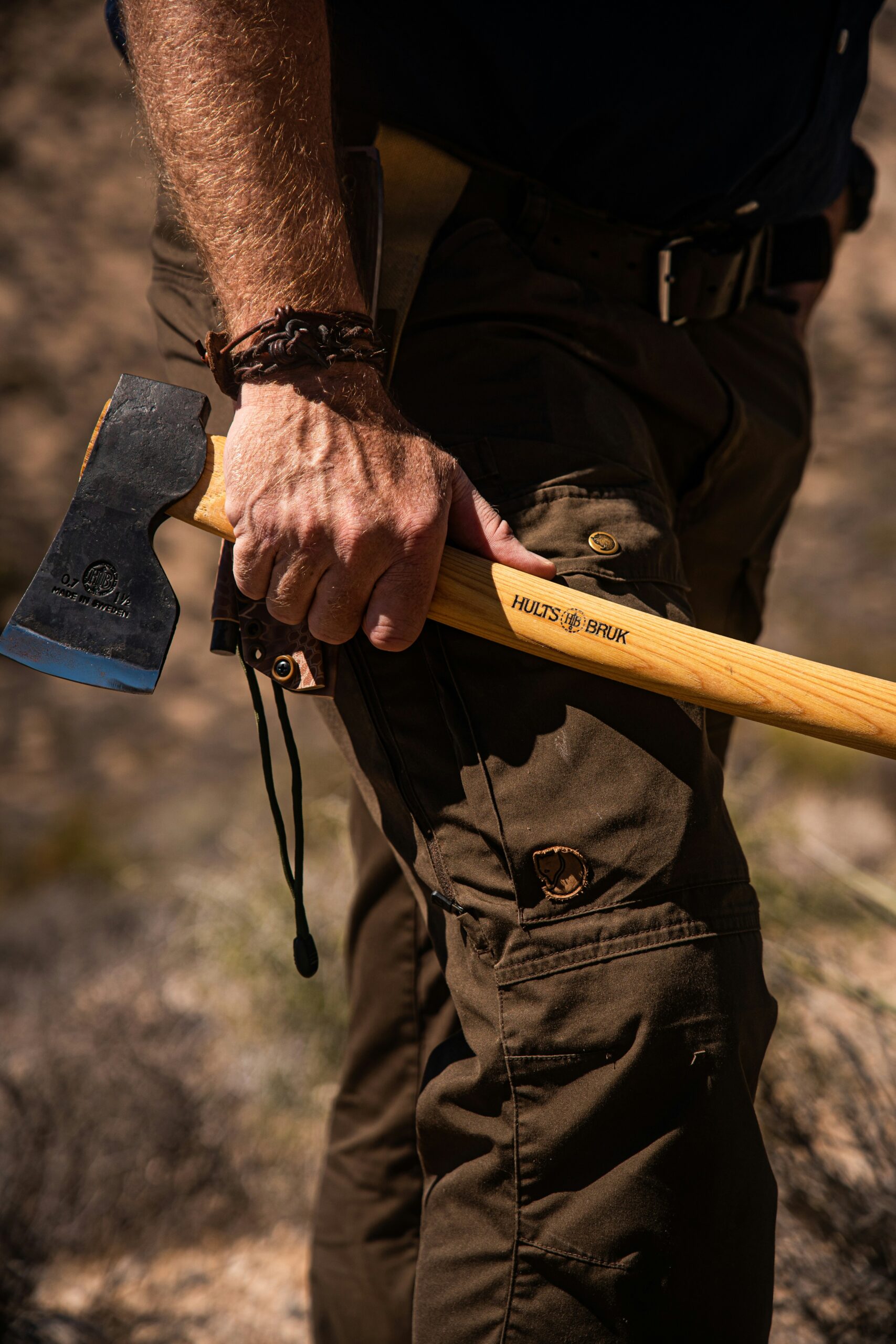Axe throwing can seem tricky at first, but mastering the safe axe throwing stance is simpler than it appears. Many people struggle with balance and control, which can lead to accidents. This guide covers the fundamentals of a safe stance, including proper preparation and advanced techniques used by experts.
By the end, readers will understand how weight distribution and handle grip affect their throw, leading to safer and more effective axe throwing. This knowledge will help solve the common problem of improper stance, ensuring a safer experience.
Key Takeaways
- Proper stance in axe throwing ensures safety and improves accuracy
- Shoes with good grip and comfortable clothing enhance stability when throwing
- Regular practice helps develop better control and precision with the axe
- Staying aware of surroundings is crucial for safety during axe throwing sessions
- Clear communication is essential for group axe throwing to prevent accidents
Understanding the Fundamentals of a Safe Axe Throwing Stance

Proper stance is essential for safety in axe throwing. A good position helps maintain balance and control during throws, impacting both rotation and accuracy and can make the difference between a successful throw and a miss. Common mistakes, such as incorrect shoulder height or stance length, can compromise safety. Understanding these fundamentals is key to enjoying the sport safely.
Why Proper Stance Is Crucial for Safety
A proper stance in axe throwing is vital for ensuring safety and enhancing skill. By positioning the feet shoulder-width apart and keeping a slight bend in the knees, a thrower can maintain better balance and control. This helps in directing the throwing axe accurately, reducing the risk of injuries that may arise from slips or improper lifting, which often involve the hand and thumb during the throw.
The Connection Between Stance and Throwing Accuracy
The connection between stance and throwing accuracy is significant in axe throwing. A well-balanced stance helps to align the body, ensuring that the arm moves in a smooth, controlled motion during the throw. This alignment is essential, as it allows for better precision when aiming with a hatchet, reducing the risk of injury from misthrows or erratic axe paths.
- Position feet shoulder-width apart for balance.
- Keep a slight bend in the knees to maintain control.
- Ensure the arm is properly aligned for a smooth throwing motion.
- Aim at the target while maintaining a stable base.
- Practice regularly to enhance accuracy with the axe.
Common Mistakes That Compromise Safety
Common mistakes in axe throwing can greatly affect both safety and performance. One common error is holding the wrist at an incorrect angle during the throw, which can lead to loss of control and increase the risk of injury.
Another frequent mistake is standing too close or too far from the target, making it difficult to hit the bullseye and leading to misthrows. It’s important for throwers to learn from experience and adapt their stance to avoid these pitfalls, ensuring a safe and enjoyable experience for everyone.
Preparing Yourself for Safe Axe Throwing

Choosing the right footwear and attire is vital in axe throwing, as it provides the necessary grip and comfort. Warm-up exercises are essential to prevent injuries and prepare the body for throwing. Additionally, setting up a safe throwing environment helps ensure a safe experience. These elements are important for mastering the safe axe throwing stance effectively.
Choosing the Right Footwear and Attire
Choosing the right footwear and attire is important for safe axe throwing. Shoes with good grip prevent slipping, which is crucial for maintaining balance during throws. Lightweight clothing allows for freedom of movement, helping throwers feel comfortable and confident while executing their stance and throw accurately.
- Wear shoes with a textured sole for better grip.
- Opt for lightweight, flexible clothing to enhance movement.
- Ensure attire is fitted but not restrictive to avoid accidents.
Warm-Up Exercises to Prevent Injuries
Warm-up exercises are crucial for preventing injuries in axe throwing. Simple stretches targeting the arms, shoulders, and back can improve flexibility and prepare the muscles for the physical demands of throwing.
For example, performing wrist rotations and shoulder rolls helps to loosen up the joints used during throws, allowing throwers to maintain proper stance and execution while minimizing the risk of strain.
Setting Up a Safe Throwing Environment
Creating a safe throwing environment is essential for enjoying axe throwing and preventing accidents. A designated throwing area should be clear of obstacles and free from distractions. Proper safety gear, such as sturdy protective barriers, should also be used to keep spectators safe from stray axes during practice or competition.
Mastering the Basic Axe Throwing Stance Step-by-Step

Positioning your feet correctly sets the foundation for a safe axe throwing stance. Aligning the body for stability enhances balance during throws. Proper grip techniques provide better control, while focusing your gaze and breathing ensures a clear aim. Each of these elements plays a crucial role in mastering the axe throwing stance effectively.
Positioning Your Feet Correctly
Positioning the feet correctly is the first step to achieving a safe axe throwing stance. A thrower should stand with their feet shoulder-width apart to ensure maximum balance and support. This positioning allows for a stable base, making it easier to maintain control during the throw and reducing the risk of injury from losing balance.
Aligning Your Body for Stability
Aligning the body for stability is a key aspect of mastering the safe axe throwing stance. A thrower should face the target with their hips and shoulders squared to ensure that the entire body works in unison during the throw. This alignment not only improves balance but also enhances the accuracy of each throw, allowing for better control and reducing the chances of injury from losing stability.
Proper Grip Techniques for Control
Proper grip techniques are essential for maintaining control when throwing an axe. A thrower should grip the axe firmly but not too tightly, allowing for a smooth release. Positioning the hands on the handle with the dominant hand at the bottom and the non-dominant hand a bit higher helps provide balance and stability, which are crucial for accuracy and safety during the throw.
Focusing Your Gaze and Breathing
Focusing on the target is essential for a successful axe throw. A thrower should aim directly at the bullseye, which helps improve accuracy. Deep, steady breaths before throwing can also help calm the mind and enhance concentration, leading to better results with each throw.
Exploring Advanced Stance Techniques

Advanced stance techniques play a crucial role in enhancing axe throwing skills. This section will cover adapting the stance for one-handed throws, modifying the stance based on different axe weights, and incorporating movement for dynamic throws. Each topic provides practical insights to help throwers improve their performance and maintain safety while throwing axes effectively.
Adapting Stance for One-Handed Throws
Adapting the stance for one-handed throws requires slight adjustments to ensure safety and accuracy. When throwing with one hand, the thrower should position their feet shoulder-width apart while leaning slightly forward. This helps maintain balance during the throw and allows for stronger control over the axe path, ensuring a more precise aim at the target.
Modifying Stance for Different Axe Weights
When modifying stance for different axe weights, throwers should adjust their foot positioning and body alignment for better control and stability. Lighter axes allow for more flexibility in stance, while heavier axes require a more grounded position, with feet planted firmly for balance. Throwers can improve their performance by experimenting with their stance based on the weight of the axe, ensuring they maintain safety and accuracy with each throw.
Incorporating Movement for Dynamic Throws
Incorporating movement for dynamic throws in axe throwing enhances skill and adaptability. A thrower can increase their effectiveness by taking small steps forward or sideways during the throw, allowing for adjustments based on the target’s distance or angle. This approach not only improves accuracy but also keeps the body engaged and responsive, which is essential for managing various throwing scenarios.
- Adjust foot placement for balance and control during movement.
- Practice stepping forward or sideways to improve accuracy.
- Stay engaged and responsive to target changes.
Troubleshooting and Refining Your Stance

Identifying signs of an unstable stance is crucial for safe axe throwing. This section will explore adjustments to improve balance and techniques for practicing with feedback and coaching. Each of these topics is designed to help throwers refine their stance, enhance performance, and heighten safety while enjoying the sport.
Identifying Signs of an Unstable Stance
Identifying signs of an unstable stance is essential for safe axe throwing. Common indicators include wobbling or shifting of the feet during the throw, as well as difficulty maintaining balance after the axe is released. Throwers should also pay attention to how their body feels; if they feel off-balance or have to adjust their position frequently, it’s a clear sign that their stance needs refinement.
Adjustments to Improve Balance
To improve balance in axe throwing, throwers can make several adjustments to their stance. Positioning the feet more firmly on the ground and ensuring they are shoulder-width apart can greatly enhance stability during the throw. Additionally, keeping the knees slightly bent and engaging the core will provide better support, allowing for a controlled and accurate throw.
- Engage the core for added support.
- Keep knees slightly bent to enhance stability.
- Position feet shoulder-width apart for better balance.
Practicing With Feedback and Coaching
Practicing with feedback and coaching is an effective way for throwers to refine their axe throwing stance. Coaches or experienced throwers can observe and provide tips on foot positioning, balance, and grip techniques. This guidance helps new throwers identify areas of improvement, making it easier to overcome challenges and build confidence in their skills.
Conclusion
Mastering a safe axe throwing stance is crucial for both safety and accuracy in the sport. Proper foot placement, body alignment, and grip techniques play significant roles in enhancing performance and preventing injuries. Regular practice and awareness of their surroundings help throwers maintain control and confidence. By following these guidelines, participants can enjoy axe throwing safely while improving their skills.

